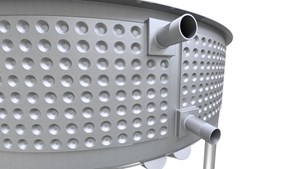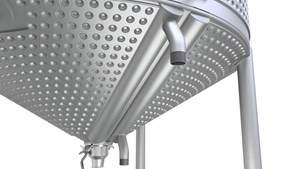Lee Industries Blog
Sign up to be notified of our new blog posts.
The Tell-Tale Signs of Dimple Jacket Vessel Quality
Posted on April 21, 2021
Jacketed pressure vessels – in which a jacket that surrounds a production tank is used to circulate fluid to heat or cool the vessel’s contents – are deployed throughout the food, biopharma, cosmetic, chemical and lubrication industries. For manufacturers purchasing a jacketed vessel, one of the key decisions they must make concerns the jacket’s heat transfer style.

But we also build dimple jacketed pressure vessels, which are popular for their cost-efficient versatility. For this article, I want to help you recognize important build-quality factors, particular to dimple jackets, that can affect overall performance and durability.
Four Build-Quality Factors to Look For
Jacketed pressure vessels are mission-critical components that are subjected to continuous heavy-duty use. For dimple jacket vessels, several build factors can impact the vessel’s ability to reach your performance objectives and sustain them for the long haul. These four are particularly important:
The strength of the jacket is influenced by the dimension and arrangement of the dimple plugs throughout the jacket wall. Like studs in a wall, plugs welded closer together will create a stronger foundation than those welded farther apart. As a standard, Lee builds its dimple jackets with a 2” x 2” pattern (2” above/below and 2” left/right); as dimples spaced at greater distances are apt to be less durable.
2. Dimple material strength
Naturally, the thickness of the dimple material will affect the jacket’s strength and durability. Lee uses 12- or 13-gauge material for its dimple jackets to create a thicker, heavier and longer lasting wall than the thinner and more common 14- or 16-gauge walls.
3. Jacket/structural welding
A common build-quality risk occurs when structural components – e.g., legs, footers – are welded onto the jacket. Because the jacket is usually thinner than the vessel and is itself welded to the vessel, it is much better to weld the structural components directly to the vessel, then work the jacket around the structural components. Moreover, welding vessel-supports directly to the dimple jacket can also negatively affect the expansion/contraction of the jacket during heating and cooling cycles.

To enhance the flow of fluid through the jacket, heavy-duty pipe headers should be connected to the jacket in a way that feeds the fluid toward the dimple across the entire span. This will encourage better distribution – and more consistent heating and cooling performance – throughout the jacket. This approach also improves the structural strength of the jacket.
By understanding the important factors that define the quality of a dimple jacket, you will greatly increase the likelihood that your jacketed pressure vessel will deliver exceptional performance for many years, or decades, to come.
To review your needs with a Lee Industries Application Engineer, please contact us. We would be happy to discuss your situation.
Comments
Add Your Own Comment